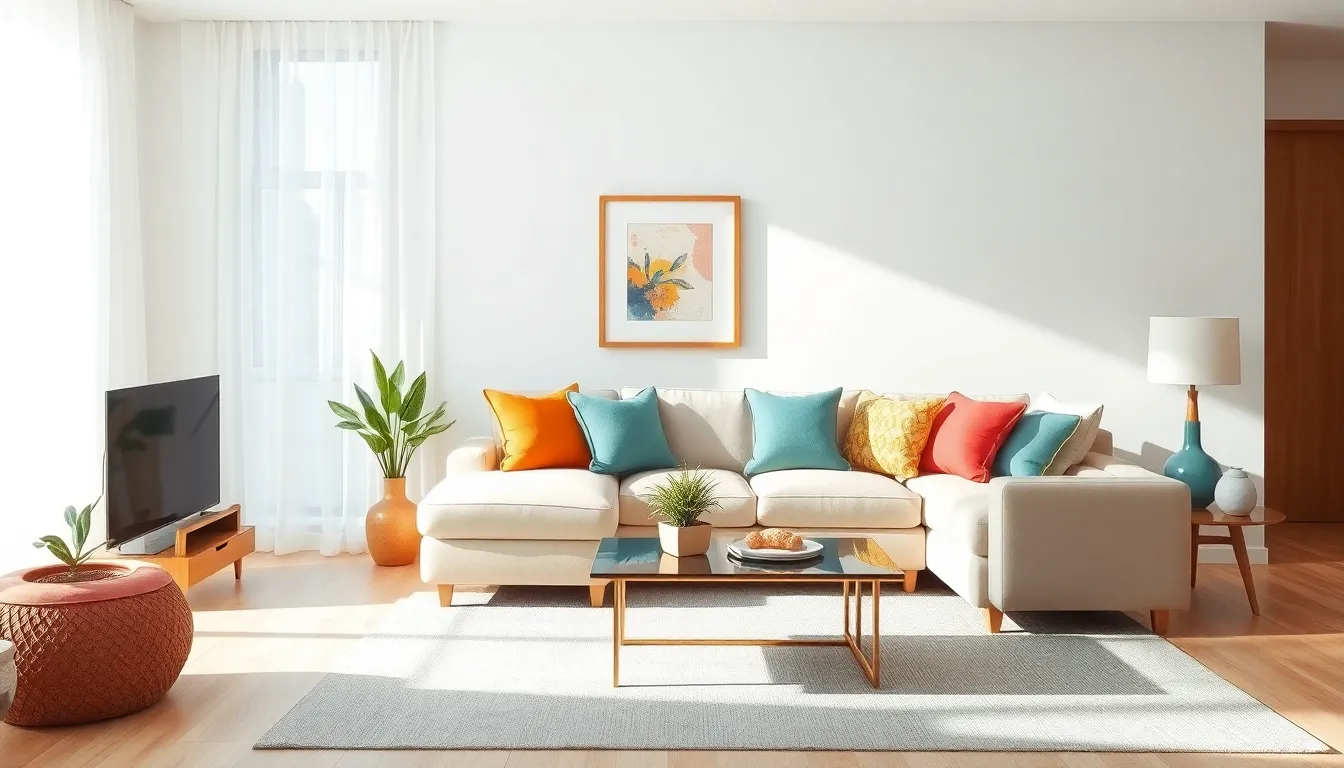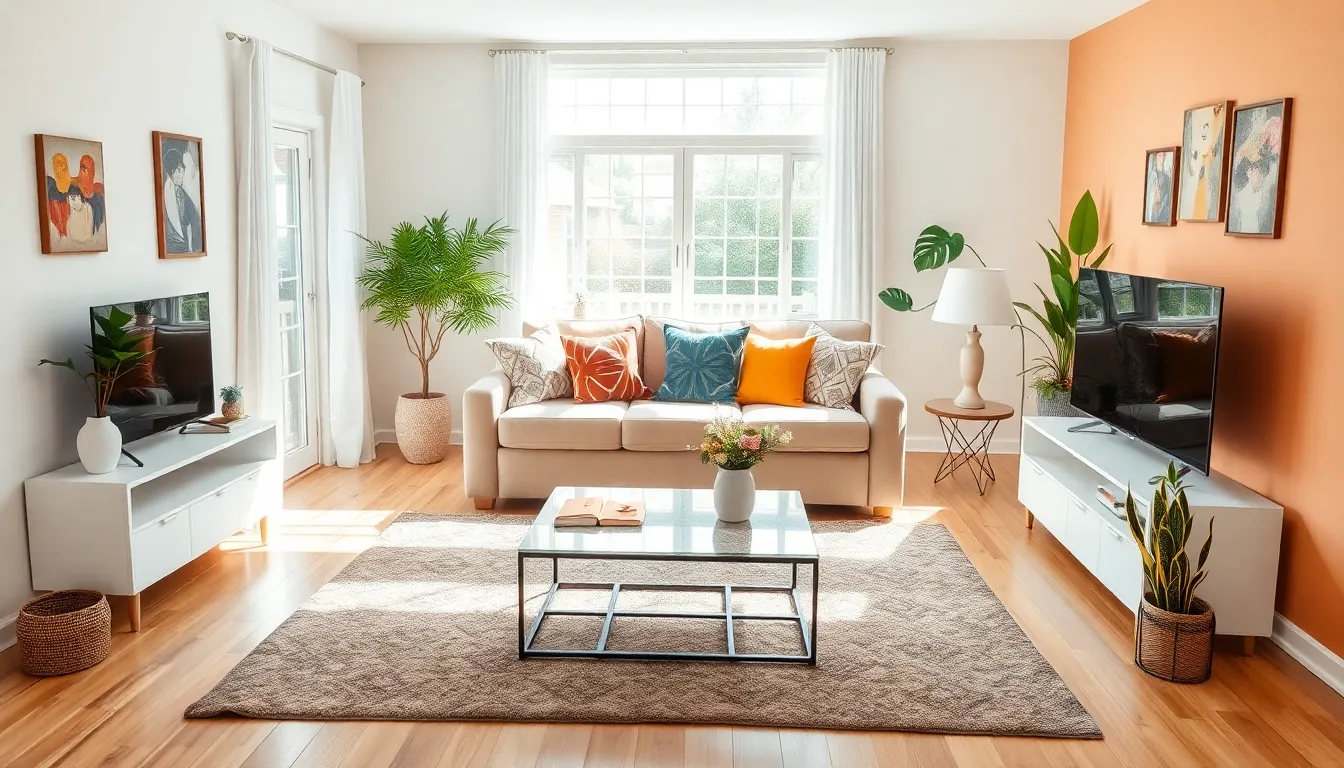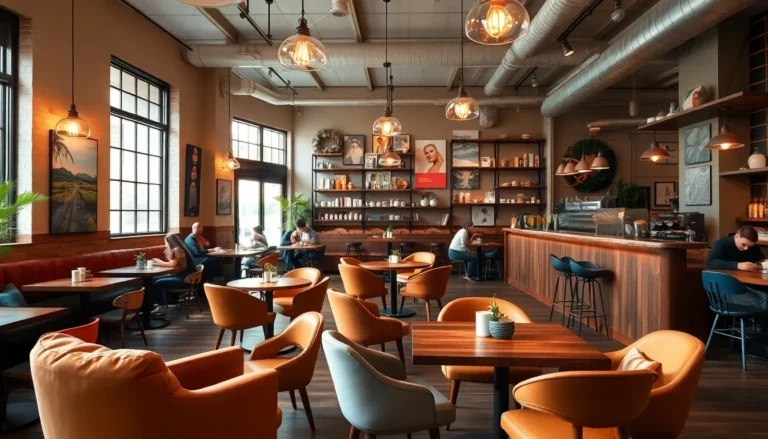Table of Contents
ToggleTransforming a room doesn’t have to feel like a daunting task reserved for professional designers. With a sprinkle of creativity and a dash of humor, anyone can turn their space from “meh” to magnificent. Whether it’s a cozy nook or a sprawling living room, the right decor can breathe life into any area and make it reflect personality.
Understanding Room Decor Tips
Transforming a room effectively involves understanding key decor strategies. Recognizing the importance of thoughtful design enhances any space.
Importance of Room Decor
Room decor impacts both functionality and mood. It establishes an atmosphere that reflects personal identity. Well-decorated rooms promote comfort, making spaces inviting. Research shows that aesthetics influence emotional well-being. A cohesive decor theme also increases property value. Effective decor can enhance the perception of space, making small areas feel larger.
Factors to Consider in Room Decor
Space dimensions significantly influence decor choices. Consider furniture scale and arrangement to maximize flow. Color schemes affect mood, encouraging either energy or relaxation. Natural light availability shapes decisions on textiles and finishes. Personal style guides material and accessory selection, ensuring uniqueness. Budget constraints also dictate available options, requiring creativity. Finally, purpose defines the decor hardiness, especially in high-traffic areas.
Color Schemes

Color schemes play a vital role in room decor, shaping the overall look and feel. Selecting the right colors can enhance functionality and mood.
Choosing a Color Palette
Consider the room’s purpose when choosing a color palette. Warm tones, like reds and yellows, create an inviting atmosphere, while cool tones like blues and greens promote calmness. Start by picking a neutral base color, then introduce two or three complementary colors to add depth. Balance is essential, so test colors together to see how they interact in varying lighting. Samples on walls help visualize the final effect.
Popular Color Combinations
Neutral with bold creates striking contrast. Gray paired with mustard yellow evokes sophistication. Soft pastels, like mint and peach, offer a charming, airy feel. Earthy tones, such as terracotta and olive green, highlight natural beauty. Monochromatic schemes use shades of one color for cohesiveness. Black and white combinations deliver timeless elegance. Every combination influences atmosphere and reflects personal style, making thoughtful choices essential for effective room decor.
Furniture Arrangement
Furniture arrangement plays a crucial role in enhancing room functionality and aesthetics. By considering the layout, a space can transform into a comfortable and inviting environment.
Maximizing Space Utilization
Maximizing space utilization involves strategic placement of furniture. Arranging larger pieces against walls opens up floor space for movement. Utilizing multi-functional furniture, such as ottomans with storage, helps in keeping areas clutter-free. Grouping furniture into conversational areas encourages interaction while maintaining an open flow. Opting for pieces with legs creates a sense of airiness beneath, making smaller rooms feel expansive. Each element should be selected with awareness of the room’s dimensions to avoid overcrowding.
Creating Functional Layouts
Creating functional layouts allows for practical use of space. Zoning areas for specific activities, like reading or entertaining, helps define purpose. Positioning seating to face focal points, such as windows or a fireplace, directs attention and enhances comfort. Leave at least 18 inches between coffee tables and sofas for easy access. Incorporating clear pathways promotes movement, reducing obstacles. Consider evolving needs, ensuring that layout accommodates changes in lifestyle. Each choice contributes to an organized, efficient atmosphere that complements personal style.
Accessories and Accents
Accessorizing a room adds character and personality, enhancing the overall decor. Thoughtfully chosen items create a cohesive and inviting space.
Selecting Decorative Items
Selecting decorative items involves balancing aesthetics and functionality. Consider the room’s theme to ensure items harmonize with existing decor. Opt for a mix of sizes and shapes to create visual interest. Incorporating personal touches, such as artwork or travel souvenirs, fosters uniqueness. Additionally, group items in odd numbers to establish rhythm and balance. Display items on shelves, mantels, or tables for varied heights and dimensions. Utilize trays or baskets to organize smaller items and keep the area tidy.
The Role of Textiles
Textiles play a pivotal role in room decor, adding warmth and comfort. Curtains frame windows, filtering light and enhancing privacy. Throw pillows introduce soft textures and colors, inviting relaxation. Area rugs define spaces and provide coziness underfoot. Additionally, blankets and cushions encourage a sense of comfort. Choose patterns and colors that complement the overall color scheme for cohesion. Layering different textiles creates depth and visual interest, significantly enriching the room’s atmosphere.
Lighting Solutions
Effective lighting transforms any room, enhancing both functionality and atmosphere. Different lighting types play crucial roles in achieving the desired effect.
Types of Lighting Fixtures
A variety of lighting fixtures serve diverse purposes in room decor. Ambient lighting offers overall brightness, often provided by ceiling fixtures or wall sconces. Task lighting focuses on specific areas, such as reading lamps or under-cabinet lights, ensuring adequate illumination for activities. Accent lighting highlights focal points, including artwork or architectural details, creating visual interest. Selecting the right fixture type enhances both aesthetics and practicality within a space.
Enhancing Ambiance with Lighting
Ambiance greatly influences the mood of a room. Dimmers control light intensity, allowing flexibility for different settings, whether intimate gatherings or energizing activities. Warm-colored bulbs promote coziness, ideal for living areas or bedrooms, while cooler tones foster focus, fitting for workspaces. Layering multiple light sources—combining ambient, task, and accent lighting—contributes to depth and warmth. Choosing fixtures that complement style themes also reinforces the room’s character while enhancing the overall atmosphere.
Transforming a room into a personal haven is within reach for anyone willing to embrace creativity. By thoughtfully considering color schemes furniture arrangement and accessories one can craft a space that not only reflects individual style but also enhances functionality and mood.
Incorporating elements like lighting and textiles adds layers of warmth and character making a room feel inviting and unique. Each decision contributes to an atmosphere that promotes comfort and well-being.
With these tips in hand anyone can elevate their living spaces into beautiful and harmonious environments that resonate with their personality.




